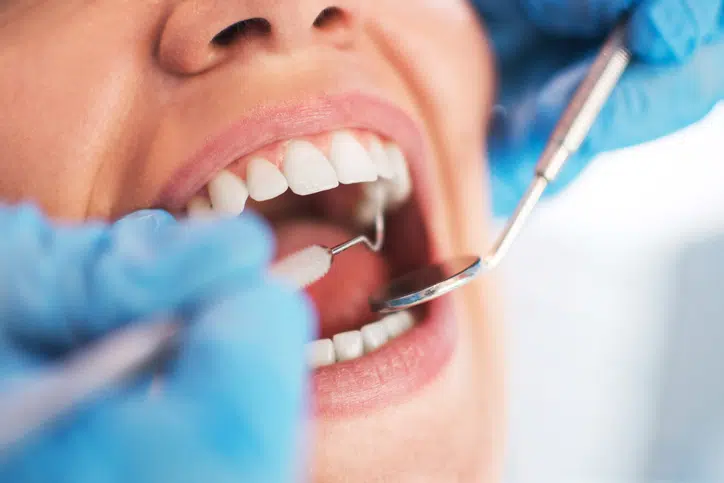
This form of tooth erosion is somewhat rare, but it can also be very serious. Here’s everything you need to know about tooth cupping.
Tooth cupping is a form of dental erosion where small indentations, or cups, develop on your teeth’s chewing surfaces. Tooth cupping is a pretty rare form of erosion, but it can be dangerous — if the holes reach dentin (a tooth’s deep layer of hard tissue) the enamel starts to collapse. In turn, this deepens the cups and worsens the condition.
Although tooth cupping is a form of erosion, it is not a cavity. But like a cavity, tooth cupping happens when enamel is worn away by plaque and bacteria. Since enamel doesn’t regenerate once it erodes, it’s essential to proactively act against tooth cupping and address it immediately.
Symptoms and Causes of Tooth Cupping
The two main symptoms of tooth cupping are changes in your tooth’s texture and sensitivity. It’s possible to feel tooth cupping with your tongue, and you may even be able to see them — teeth with cupping also could look thinner than usual, and the edges may become irregular as enamel erodes. People with extreme tooth cupping might experience tooth sensitivity to temperatures and sweets, as well as tooth pain or even infections.
Common causes of tooth cupping can be narrowed down into two categories of enamel erosion:
- Intrinsic erosion comes from acids in your mouth as a result of gastroesophageal reflux or excessive vomiting due to alcoholism or eating disorders.
- Extrinsic erosion comes from ingesting external acids that lower your body’s pH level, like sugary beverages (fruit juice, soda, energy drinks) and acidic foods (lemons and other citrus).
Another common cause of tooth cupping is dry mouth. When you have low saliva levels, the acids in your mouth don’t get washed away and can cause erosion. Some medications can contribute to dry mouth.
Treatment and Prevention
The treatment options for tooth cupping depend on its extremity. If erosion from tooth cupping hasn’t reached dentin, dental bonding is an option. Your dentist will bond your teeth’s damaged surfaces with a plastic-like layer that protects from further damage, and this material will match the color of your teeth.
Teeth that are severely eroded from tooth cupping require more in-depth solutions, especially if the cupping has reached dentin and enamel has collapsed. Your dentist may install a dental crown, composite filling, inlay or onlay for your damaged tooth.
Here are some ways to prevent tooth cupping:
- Limit highly acidic, sugary food and drink consumption.
- DON’T brush your teeth immediately after eating — since acids and sugars from eating soften tooth enamel, your teeth are most vulnerable right after eating.
- Stay hydrated and avoid dry mouth. Chewing sugar-free gum can help you produce more saliva, washing away bacteria and strengthening your teeth with necessary minerals.
- If you have bruxism, address it and prevent it as much as possible.
Along with these tips, it’s important to practice good oral hygiene habits like brushing your teeth and tongue, flossing, and rinsing with a mouthwash. This will help prevent the bacteria that causes tooth cupping and other dental erosion from taking root.
Take Control With Espire Dental
The most important thing you can do to prevent and treat tooth cupping is be proactive! Along with following a regular oral health routine, you should visit your dentist often — especially if you’re experiencing any tooth sensitivity or strange textures on your teeth.
For troubles with tooth cupping, talk to Espire Dental! We can diagnose tooth cupping and other types of dental erosion, and our team of experts will help you choose the treatment option that’s right for you. Schedule an appointment today!


